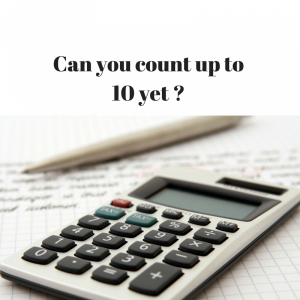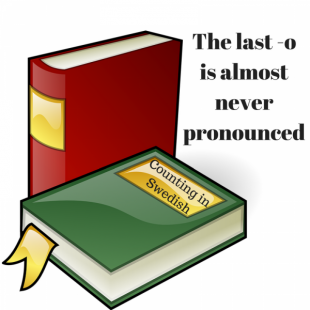Counting in Swedish
Sign up for free to get all information about private lessons and our available group courses (A1, A2, B2, B2, C1, C2)
Sign up for freeSign up for free to get all information about private lessons and our available group courses (A1, A2, B2, B2, C1, C2)
Sign up for freeLearning how to count in Swedish is not very complicated, it is very similar to counting in English but different spelling of course. Just follow the different steps the lesson will take you through and soon you will be able to count up to 10 and higher. At the end of the lesson you will find an short video that will give you a clear insight on how to really pronounce the numbers in case you have difficulties. Now relax and concentrate. Enjoy the lesson!
Take online language lessons with a professional teacher
Swedish written number | Pronunciation | Number |
| Noll | nɔl | 0 |
| Ett | ɛt | 1 |
| Två | tvo | 2 |
| Tre | tre | 3 |
| Fyra | fyːra | 4 |
| Fem | fɛm | 5 |
| Sex | sɛks | 6 |
| Sju | ɧʉː | 7 |
| Åtta | ɔta | 8 |
| Nio | niːo | 9 |
| Tio | tiːo | 10 |
Okay now we've mastered the basic Swedish numbers which are 1 to 10. Nothing too complicated so far? Just try and memorise the basics, give yourself time and don't worry about making mistakes!

Swedish written number | Pronunciation | Number |
| Elva | ɛlva | 11 |
| Tolv | tɔlv) | 12 |
| Tretton | trɛtɔn | 13 |
| Fjorton | ˈfju:rʈɔn | 14 |
| Femton | fɛmtɔn | 15 |
| Sexton | sixteen | 16 |
| Sjutton | ɧɵtɔn | 17 |
| Arton | artɔn | 18 |
| Nitton | nɪtɔn | 19 |
As the English numbers have 'teen' at the end of the numbers, the Swedish numbers have 'ton'. There are a few exceptions, for example the number 11 which is spelled 'Elva'. Other exceptions will follow below. Try and memorise these special spellings and you will find the rest very simple.
Note for the rest of the numbers, such as 14, 15 and 16. They start with the unit, and the only thing that changes is the ending where you are required to add 'ton'.
Great! We've covered the most complicated part, well done! Now we will have a look at the multiples of 10.
Note! Knowing numbers from 1-10 it's very beneficial because it will be simplier to remember. In regards to multiples of ten only 20 and 100 stand out.
The others, you simply add (tio) at the ending of the number. i.e 50 would be Femtio. As you can notice (fem) is from the number five and (tio) is the ending that shows its an multiple of ten.
Swedish number | Pronunciation | Number |
| Trettio | trɛtɪ | 30 |
| Fyrtio | fœrtɪ | 40 |
| Femtio | fɛmtɪ | 50 |
| Sextio | sɛkstɪ) | 60 |
| Sjuttio | ɧɵtɪ | 70 |
| Åttio | ɔtɪ | 80 |
| Nittio | nɪtɪ | 90 |
Tip ! The last -o in trettio and nittio is almost never pronounced.
Learning how to construct numbers for example; 23, 36 and so on is very similar to English numbers. With English numbers you add 'ty' at the ending of the multiple and then add the unit directly to construct the number.
Lets take 95 has an example, in Swedish you use 'nittio' for ninety and then put the unit directly after, five would be 'fem'. Those two combined gives us nittiofem!
More examples here.
Swedish number | Number |
| tjugo-tre | 23 |
| trettio-fyra | 34 |
| tjugo-fem | 25 |
| fyrtio-fem | 45 |
| sjuttio-nio | 79 |
| nittio-två | 92 |
The dash (-) is here only for guidance, you normally remove it.
Ordinal numbers are also very easy to memorise and once you know the pattern you will know all of them. Firstly they are numbers which put things in order. In Swedish ordinal numbers are pretty easy to master. They don't change their format at any circumstance.
Below you will find the Swedish ordinal numbers from 1 to 10.
Look at the numbers carefuly, one irregular ordinal number is 4th which is fjärde and 6th as “sjätte. On the other hand the rest just follow the pattern.
Swedish numbers | Short version |
| första | 1st |
| andra | 2nd |
| tredje | 3rd |
| fjärde | 4th |
| femte | 5th |
| *sjätte* | 6th |
| *sjunde* | 7th |
| åttonde | 8th |
| nionde | 9th |
| tionde | 10th |
It's not so hard right? if you have noticed, sixth and seventh are stared (**). The reason why is because people often find them confusing expecting them to be different. they expect ''sixth'' as ''sexte'' and seventh as ''sjude''. The are stared so that you remember that they are different.
We hope that you have enjoyed the lesson and now you know how to count in Swedish. If you have encoutered difficulties, look back on where you struggled and practice more.
Remember practice makes perfect! See you later!